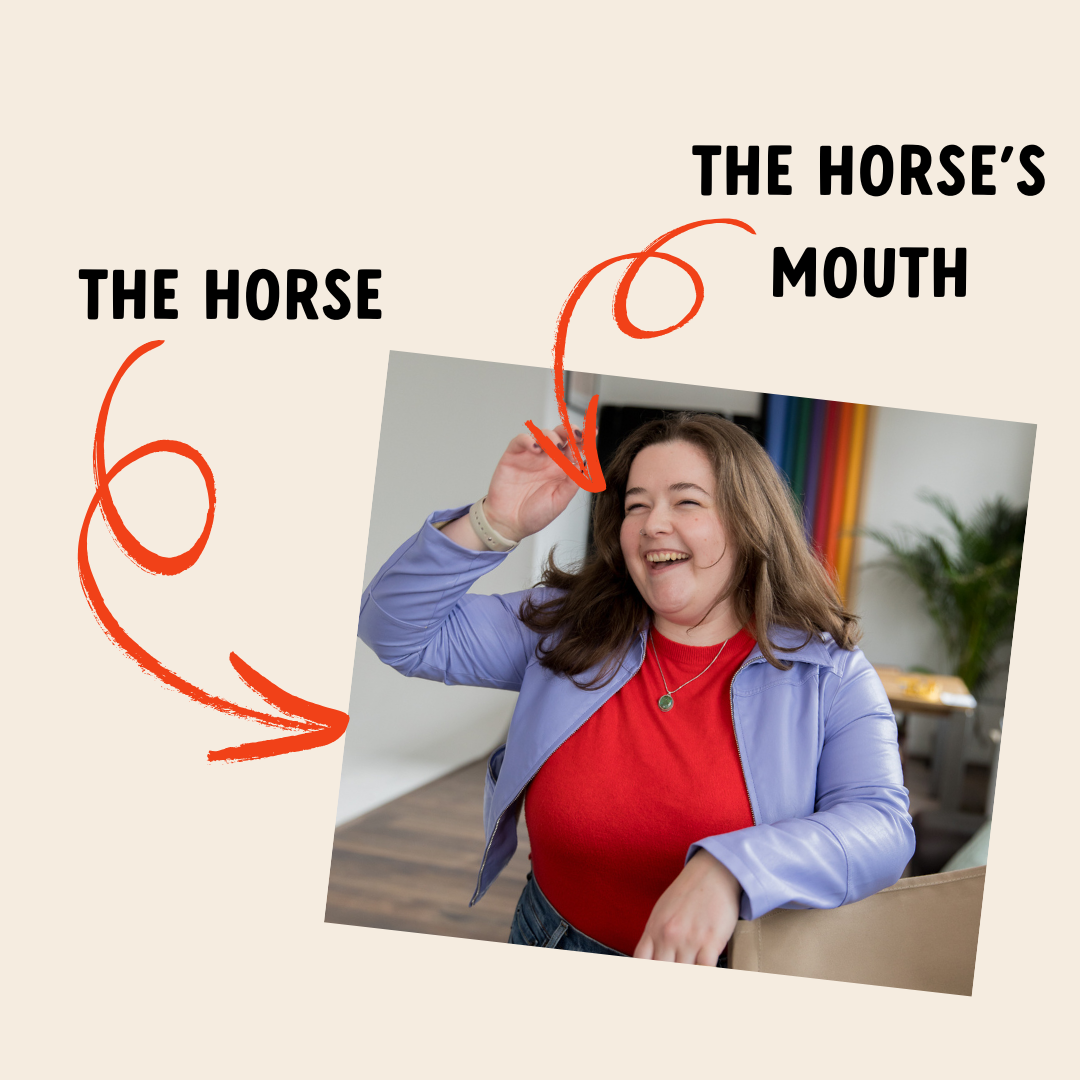Become the fun brand in JUST 2 steps
There are PLENTY of reasons why you might want to start adding some fun to your brand voice.
Maybe you feel like your tone of voice doesn’t represent you anymore?
Maybe it’s just that your brand copywriting has felt a little dull and lifeless lately?
Or maybe you’ve realised all of the benefits that being known as the fun brand can bring to your business?
Whatever the reason is, you’ll be delighted to know that there are really only 2 steps to go from being a boring beige business to a fun brand that your customers can truly engage with.
So let’s get cracking.
The 2 steps are:
Understanding what YOUR unique definition of fun and humour is, in a way that is authentic to your brand.
Giving your teams and your business the tools in order to create this definition of fun consistently and authentically.
Right, end of blog. Go back to living your life.
I jest xoxo
If you would like slightly more detail on this nuanced and important topic, continue onwards.
How to Become the Fun Brand
Find the RIGHT Definition of Fun and Humour
Sounds simple. And it sort of is.
However, this definition of fun needs to align with the following things:
Your audience
In order to TRULY understand your audience and how to have fun with them, you need to go beyond the psychographics and demographics. Sure, both of these things are useful tools to help build an understanding of your audience, but on their own they’re just not enough.
You need to understand what fun means to them, and then how you meet that definition of fun as a brand.
With my clients, I like to focus on two different types of fun when it comes to their audience.
The definition of fun related to your product or service.
The definition of fun that has sweet FA to do with your product or service.
I always enjoy talking about no.2 most.
Because sure, you want to understand how your service overcomes your customer’s pain points, and how your way of working and USPs overcome these objections.
But what people really want to know is how well you understand them (and their problems). And in order to communicate with them, you need to understand how their lives work completely outside of your client relationship, and the value you add to them as a service provider.
Your brand identity and personality
Lots of people can talk about other brands that they think nail fun and humour really well. I’d bet my back teeth that those brands are probably Monzo, Duolingo, RyanAir, Liquid Death etc.
And yes, those brands are very good at doing fun and humour across their brand voice.
But do you know what makes it so good?
They’ve figured out how to do it in a way that’s right for them.
If you develop a definition of fun and humour that works for someone else, and completely forget to factor in your own brand identity and personality, all its going to do is create a tone of voice that feels inauthentic. And the only thing that inauthentic fun creates, is CRINGE.
And we don’t want that.
To avoid this, you need to get really honest about what your brand identity and personality is, and make sure that the definition of fun and humour you want to create aligns with that.
Your value proposition
If you’re a premium brand whose value proposition hinges on exclusivity and ultimate luxury, then going for a cheeky, childish and slapstick tone of voice probably isn’t going to align.
In the same vein, if you’re a children’s toy brand, then maybe an intellectual and witty tone of voice will seem a little jarring to your target audience.
Not only does your chosen definition of fun and humour need to align with your personality, it also needs to line up with what you offer as a business.
Now, that’s not to say you should fall into the common pitfall I see businesses go arse-over-tit into all the time:
“We don’t sell a fun product or a fun service, so it doesn’t make sense for us to have fun in our brand tone of voice”.
LIES.
Monzo is a bank.
Liquid death sells water.
It’s not about what you’re selling, it’s about how you’re selling it.
If you want to have fun with your audience as you do it, then go for it. You just have to find the kind of fun that works for your brand, your value proposition, and your audience.
Top Tip!
You’re going to want to create this definition with as many different departments as possible. Not just marketing. You need everyone to feel comfortable writing in a way that reflects a shared definition of fun. Otherwise it just becomes patchy and inconsistent.
Set your teams up with the tools and processes to be consistent with it
Why does consistency matter so much? Because you can’t become known as the genuinely fun brand without it.
Adding fun to your brand voice is about more than just sharing a meme on LinkedIn once a month. If you want to build genuine, long term connections with your target audience, you need to be genuine and long term about how you add fun to your brand voice.
So, what do you actually need to create in order to help teams do this consistently?
GUIDELINES!
And not just 4 words on a page with a couple of descriptor sentences underneath. I mean in-depth guidelines that give your teams clear direction on your tone of voice, and how fun and humour fits into that.
You want guidelines that clarify:
What definition of fun you’re creating
The core messages of your business
What humour devices and linguistic formats you use to create this
How does this definition of fun fluctuate across different platforms and scenarios? (for example, are you having the same kind of fun at the brand awareness stage on instagram as during your purchase process or when talking about missed payment? I doubt it)
Top Tip!
Consider your content creation processes as you’re creating your guidelines. For example:
Are your processes flexible enough to keep your content reactive when it needs to be?
How many rounds of amends and feedback do you go through on average? Is this making it harder for your creatives to take more risks, and push the boat out when it comes to fun and humour?
How can you avoid these amends in the first place?
Is there some recurring feedback or points that you can cover in your guidelines to save time (people making the same comments, and people having to action the same amends over and over?)
Because it’s all well and good developing big ol’ tone of voice guidelines. But if you haven’t also considered how they’re actually going to be used in your business, and what recurring problems they need to solve, then they won’t be as impactful as you need them to be.
Fancy chatting to the horse?
Want to hear straight from the horse’s mouth about how you should add fun and humour to your brand specifically, then we should probably chat.


